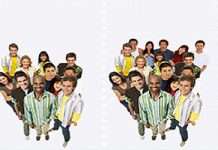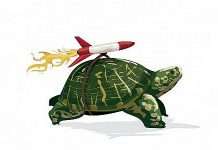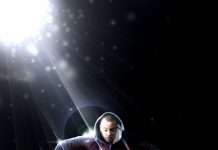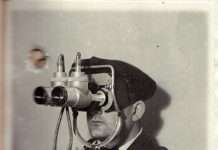For the first time in 40 years, a NASA astronaut class lacks any Black recruits. This historic development comes as the space agency celebrated another milestone – with its most recent group of trainees, women now outnumber men for the first time ever. The shift sparked concerns and questions about whether long-standing commitments to diversity within NASA are being eroded.
While NASA officials emphasized the “best and brightest” amongst 8,000 applicants joining this elite training program, the lack of Black representation raises troubling parallels with a period in American history where progress on space exploration was inextricably linked with racial exclusion. The absence of Black astronauts in this class mirrors that which existed throughout most of NASA’s early years, culminating in the 1985 Astronaut Candidate Group 11 being the last before this year to lack Black members.
This latest development coincides with a wider trend within the federal government under President Trump’s administration. In 2017, executive orders canceled numerous diversity, equity, inclusion, and accessibility initiatives across multiple agencies, including NASA. These actions were deemed “illegal and immoral discrimination programs.” Within weeks of this order, NASA dismantled some dedicated offices focused on diversity and removed related content from its website.
It’s unclear if these policies directly influenced the selection process for the 2025 astronaut class, a claim NASA did not address despite repeated requests. The agency declined to comment on whether it still intends to include a person of color in the upcoming Artemis III moon-landing mission, scheduled for as early as 2027. In their official statement provided instead of direct answers, NASA spokesperson Bethany Stevens insisted that astronaut selection is based solely on merit: “education, physical fitness, applicable experience.”
A History Marked by Strides and Setbacks in Diversity
NASA’s history with diversity paints a complex picture. While its early years saw a complete lack of non-white astronauts – mirroring the broader societal norms at the time – progress eventually took root. The 1978 selection of astronaut Group Eight marked a turning point, including three Black recruits. One of these, Guion Bluford, broke racial barriers in 1983 by becoming the first Black American to venture into space aboard Challenger’s STS-8 mission.
NASA doubled down on inclusion efforts, consistently selecting at least one Black astronaut per class starting in 1987 with Mae Jemison, who later became the first Black woman in space in 1992. This inclusivity extended beyond astronaut selection to encompass other crucial roles within NASA – encompassing research and engineering positions as well.
Throughout its mission statements, NASA repeatedly emphasized the importance of representing the “diversity of the American public” for its human exploration endeavors. This message was particularly prominent when planning the Artemis program, with a firm commitment made in 2021 to include both a woman and person of color on its lunar landing mission. However, this year’s astronaut class selection casts doubt on whether these promises remain strong commitments moving forward.
Beyond NASA: A Broader Call for Diversity in STEM
The lack of Black representation in the latest astronaut class is not an isolated incident; it resonates with a broader challenge facing the STEM fields as a whole. The American Astronomical Society’s 2010 decadal survey already highlighted the significant underrepresentation of African Americans, Hispanics, and Native Americans in astronomy, noting that achieving parity would take decades without dramatic increases in doctoral degrees awarded to these communities each year.
This lack of diversity is not just an ethical issue but a practical one as well. Experts emphasize that STEM fields thrive on diverse perspectives, leading to more innovative problem-solving.
Retired astronaut Joan Higginbotham, who became NASA’s first Black female mission specialist in 1996 after nine years as an electrical engineer with the agency, highlighted the crucial impact of seeing people who look like you represented in STEM fields: “If they can do it, then there’s a chance for me to do it too.”
The 2025 Astronaut Class and Unanswered Questions
The new astronaut class consists of ten individuals between 34 and 43 years old. This diverse group includes a U.S. Army chief warrant officer, geologists, test pilots from the Air Force, Navy, and even United Airlines, highlighting NASA’s continued focus on practical skills needed for space exploration. While NASA has acknowledged Yuri Kubo’s Japanese heritage through her father, they have not released further details about the racial and ethnic backgrounds of the other recruits, opting instead to focus solely on their professional qualifications.
The class includes notable individuals like Lauren Edgar, with 17 years of experience supporting Mars rover missions as a geologist, and Erin Overcash, who will be training alongside her husband Anil Menon (a NASA astronaut assigned to the International Space Station in 2026). Despite this diverse range of backgrounds, the absence of Black representation remains a stark contrast against past commitments and raises crucial questions about the direction NASA is taking regarding diversity.
The agency’s focus on selecting the “most qualified” for space exploration must be accompanied by a clear commitment to ensuring that “qualified” encompasses a broad spectrum of backgrounds and experiences. The lack of Black astronauts in this class necessitates an open dialogue within NASA and beyond, examining whether systemic issues are hindering progress towards truly equitable representation in achieving America’s ambitious spacefaring goals.









































